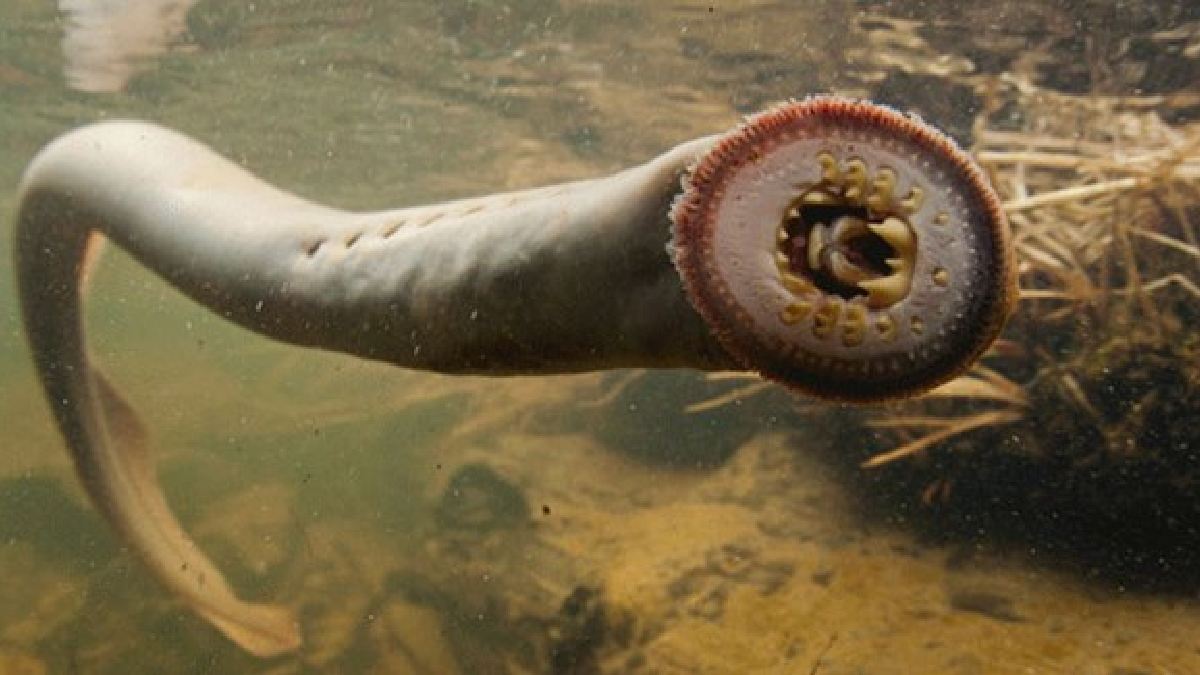New Delhi: Meet the Pacific Lamprey, a jawless fish that has roamed the Earth for a staggering 45 million years, dining on the likes of dinosaurs and even trees. This remarkable creature has a rather macabre dining habit – it sucks the life out of its prey, dehydrating them to their demise. Despite the challenges posed by four mass extinctions, these fish continue to thrive. Let’s delve into the intriguing world of the Pacific Lamprey.
The Pacific Lamprey hails from the ancient Agnatha group of fishes, which has been a constant presence on Earth for 45 million years. It’s a true survivor, having feasted on dinosaurs and drained trees of their life. Scientifically known as Entosphenus tridentatus, this remarkable creature is primarily found in the North Pacific Ocean, spanning from California to Alaska, and even making its way to the Bering Sea, from Russia to the Japanese shores.
Unconventional diet
What sets these jawless fish apart is their unconventional diet. Unlike their carnivorous counterparts, lampreys solely consume liquids. They specialize in siphoning the blood of salmon, flatfish, rockfish, and hake from the Pacific Ocean. These fish have survived not just by their unique biology but by adapting to the ever-changing conditions on our planet.
Don’t mind the teeth, we’re just migrating.
Using its jawless mouth as a big suction cup, Pacific lamprey can migrate from oceans to freshwater breeding grounds, like this group seen at Bonneville Dam on the Columbia River earlier this summer. @USFWS video: Brent Lawrence pic.twitter.com/UwjX5WO9Tv
— USFWS Pacific (@USFWSPacific) September 19, 2022
Cartilage structure and bloodsucking
Lamprey fish have no bones; their bodies are primarily composed of cartilage. They lack jaws but are equipped with a unique mouth designed for bloodsucking. Rows of small teeth line their mouths, allowing them to latch onto their prey and extract blood and bodily fluids. It’s worth noting that lampreys don’t consume the flesh of their victims.
Watch the full video of Grand Ronde Tribal member and Smoke Signals social media/digital journalist Kamiah Koch traditionally harvesting Pacific lamprey at Willamette Falls with her cousin, Tribal member Jade Unger at https://t.co/u0i0E04Yg2 pic.twitter.com/pXLioNgFcl
— Smoke Signals (@CTGRSmokeSignal) August 11, 2022
Reproduction and survival
Female lampreys are prolific egg layers, depositing up to 200,000 eggs in clean water. The entire conception process takes about three to four weeks. After hatching, the larvae burrow into the riverbed, where they remain for a minimum of ten years. Once they’ve matured slightly, they migrate to lower-flowing waters, ensuring an easier source of food.
Adult Pacific Lamprey fish can grow up to 33 inches in length and are capable of impressive feats, swimming hundreds of kilometers in search of optimal feeding and breeding grounds. These fish serve as a vital part of the ecosystem, although they also become prey for various birds, mammals, and fish due to their meat-rich bodies, which contain five times more flesh than salmon.
Intriguing and ancient, the Pacific Lamprey stands as a testament to the resilience and adaptability of Earth’s diverse creatures, continuing to thrive in our ever-changing world.












